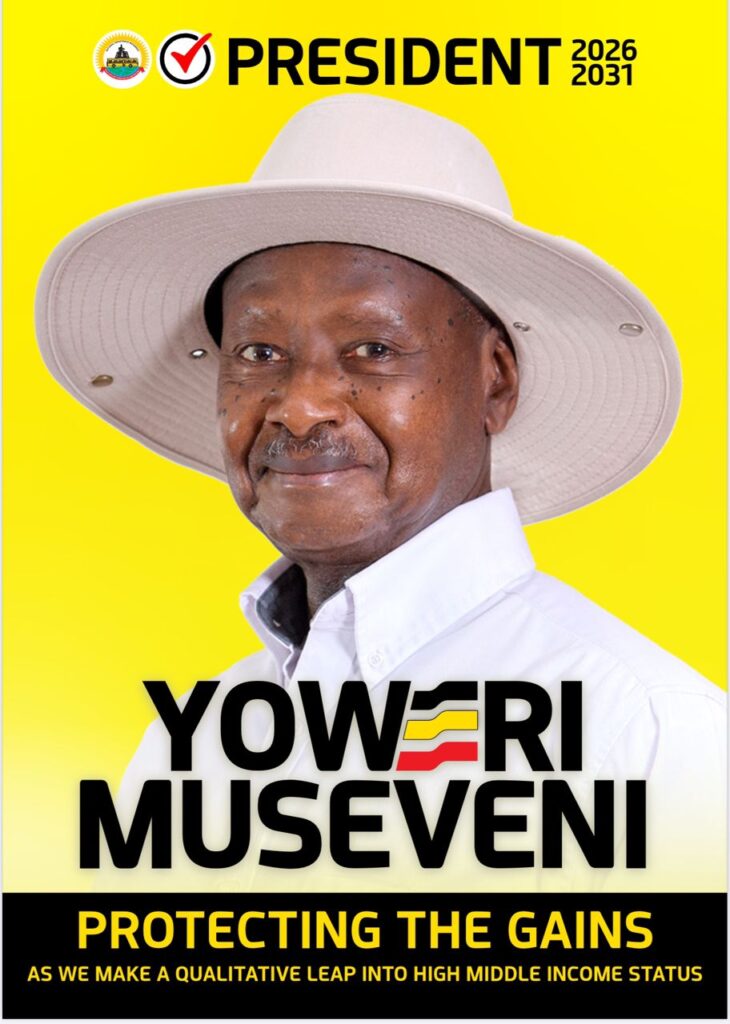By Hon Hellen Asamo
Minister of State for Disability
Uganda joins the rest of the World to commemorate International Day for Little Persons on 25th October under the theme“Raising Awareness about Dwarfism and Promoting Inclusion of Little Persons in Uganda”
This year’s International Day for Little Persons emphasizes the importance of the need to educate the public, challenge misconceptions, and advocate for equal opportunities and rights for Persons of Short Stature in Uganda.
Little Persons, often referred to as persons with short stature or persons affected by dwarfism, face a complex web of challenges that affect nearly every dimension of their lives physical, social, economic, psychological, and institutional. These challenges are not inherent to their stature, but arise largely from environments, systems, and attitudes that exclude people who do not conform to average physical norms.

In Uganda, despite the protection afforded by the Persons with Disabilities Act (2020) and the Revised National Policy on Persons with Disabilities (2023), little persons continue to struggle with accessibility, recognition, and dignity in daily life.
A major area of concern is the inaccessibility of the physical environment. Most of Uganda’s infrastructure for example buildings, roads, and public facilities have been designed without consideration for persons of short stature.
Walkways and pavements, which could have been safe mobility spaces, are increasingly obstructed by barricades installed by city authorities to control boda boda riders. In Kampala and other urban areas, these barriers, though intended to prevent motorcycle lawlessness, have inadvertently restricted the mobility of Little Persons, particularly those using wheelchairs or walking aids.

Public transport presents another barrier; taxis and minibuses often refuse to stop for Little Persons, or drivers express reluctance to carry them, assuming they will require excessive assistance or cause delay. This form of everyday discrimination undermines their independence and right to mobility.
Health and medical challenges further compound their exclusion. Little persons frequently experience orthopedic, spinal, and joint conditions that require specialized attention, yet few health professionals in Uganda are trained to manage these.
Cases of incorrect medication dosage both overdosing and under dosing are not uncommon, as health workers often prescribe based on standard adult height and weight.
Women who are Little Persons face particularly high risks during childbirth, as delivery beds are typically high and not adapted for their stature, making normal delivery extremely difficult.
Access to reproductive health services and contraceptives is equally problematic, as community health workers sometimes assume that women of short stature are minors or asexual and therefore ineligible for family planning. These assumptions reflect not only medical ignorance but also harmful stereotypes that undermine bodily autonomy and family planning choice.
In the world of education,Learners with Little Persons are still marginalized by both the system and social attitudesIn many schools, classmates mock Little Persons by forcing them to “touch the opposite ear” over the head a humiliating act used to measure whether someone is “old enough” for school. Teachers rarely intervene, and some even share in the ridicule.

Classroom settings are not adapted to their needs; desks are too high, blackboards are out of reach, and school notice boards are mounted far above their eye level, making it difficult to access information. Such environments communicate exclusion and reinforce the perception that Little Persons do not belong in mainstream education.
Employment and workplace accessibility remain equally troubling;
Many employers still hold misconceptions about the capabilities of Little Persons and fail to provide reasonable accommodation. For example, biometric attendance systems and fingerprint scanners are often installed too high, making them difficult or impossible for Little Persons to reach.
Counters, filing cabinets, and Bank ATM machines are similarly elevated, compromising both convenience and security especially when a person has to share their personal identification number (PIN) with a bystander or sometimes security guards to complete a transaction.
In salons, the lack of adjustable chairs makes it difficult for women of short stature to comfortably receive hairdressing services, a simple act that becomes a reminder of their exclusion from everyday social spaces.
Although Ugandan law allows persons with Little Persons to drive and provides tax waivers on imported customized vehicles for persons with disabilities, implementation remains restrictive. Many driving schools refuse to admit Little Persons, arguing that they cannot be accommodated or trained effectively due to vehicle modification requirements.
As a result, many who could drive safely are denied the opportunity to acquire licenses, perpetuating their dependence on others for mobility.
Similarly, public infrastructure such as courts and offices often ignore their presence little persons report being almost suffocated in courtrooms due to poor seating arrangements or being overlooked entirely in proceedings.
Social and cultural stigmas further intensify these challenges.
In communities, little persons are often ridiculed, viewed as objects of entertainment, or treated as perpetual children. This negative attitude extends to religious spaces, some churches push adults with Little Persons into Sunday school classes, assuming they are children. Such treatment erodes dignity and reinforces harmful stereotypes that little persons are incapable of adult responsibilities.
Moreover, cultural misconceptions associating Little Persons with curses or witchcraft continue to persist in rural Uganda, leading to social isolation and discrimination.
Access to information and communication also remains a barrier; Many public notices, advertisements, and bulletin boards are placed high on walls, far above the sightline of Little Persons, excluding them from opportunities and updates that others easily access. While Uganda’s Building Control Act and Persons with Disabilities Act (2020) both emphasize accessibility, enforcement remains weak. Most buildings still lack reasonable accommodation features such as adjustable counters, appropriately sized doorways, or ramps suitable for users of short stature.
Psychologically, the cumulative impact of these barriers and prejudices is profound. Constant exclusion, mockery, and rejection lead to low self-esteem, anxiety, and depression among Little Persons. Some withdraw from public life altogether, while others struggle to assert their rights in spaces that continue to treat them as lesser beings. The lack of peer support and professional counselling services for this group exacerbates their isolation, leaving many to navigate these challenges alone.
As I conclude on the challenges faced by little persons in Uganda, its important to note that most of them are rooted in structural exclusion and social prejudice. From inaccessible public spaces and discriminatory service provision to harmful cultural attitudes and policy neglect, little persons face compounded barriers that violate their rights to equality, dignity, and participation.
Addressing these issues requires an inclusive approach one that enforces existing accessibility laws, trains professionals across sectors, raises awareness to combat stigma, and ensures that persons with Little Persons are visible and active participants in Uganda’s social, economic, and political life. Only through such deliberate measures can Uganda fulfill its commitment to leaving no one behind.
In line with Uganda’s strong affirmative action framework and the UN Convention on the Rights of Persons with Disabilities 2006, we are expected to establish effective access to general technical and vocational skilling, ensure that reasonable accommodation is provided to Persons with Disabilities at the workplace, protect the rights of Persons with Disabilities on an equal basis and promote vocational and professional rehabilitation, job retention and return to workplace programmes for Persons with Disabilities.
To ensure an improvement in household incomes for Persons with Disabilities, The Government of Uganda (GOU) Provides for anti-discrimination provisions in the Employment Act 2006 which was enacted in line with the state policies such as Article 32 of the Constitution of the Republic of Uganda allowing affirmative action for marginalized groups.
Government Intervention
Uganda government is committed to fostering an enabling environment for Little Persons through inclusive policies and programs that guarantee equal access to education, healthcare, and economic opportunities.Our legal frameworks, including the Constitution and the Persons with Disabilities Act 2020, uphold the rights of persons with disabilities and mandate stakeholders to provide specialized support where needed.
The Revised National Policy on Persons with Disabilities prioritizes protection against discrimination and neglect, while promoting improved communication, healthcare access, and social inclusion tailored to individual needs. Since ratifying the UN Convention on the Rights of Persons with Disabilities in 2008, Uganda continues to uphold full participation and non-discrimination of little persons,.
Economic empowerment programs, such as the National Special Grant and the Parish Development Model with its 10% allocation for disability-inclusive initiatives, ensure that Little Persons benefit from livelihood opportunities. Government has already set aside 50million shilling as Emyooga SACCO for Little Person at national level.
We remain dedicated to increasing the involvement of Little Persons in policy development and program design, ensuring their voices guide decisions that affect them. Through continued collaboration with stakeholders, the Government will enhance public awareness and service delivery to eliminate barriers, uphold dignity, and advance the full inclusion of little persons in Uganda’s development. In conclusion, I call upon Government Ministries, Civil Society, the media, and the public to support initiatives that advance the rights and inclusion of little persons. Together, we can foster a society where everyone, regardless of stature, is valued and empowered


